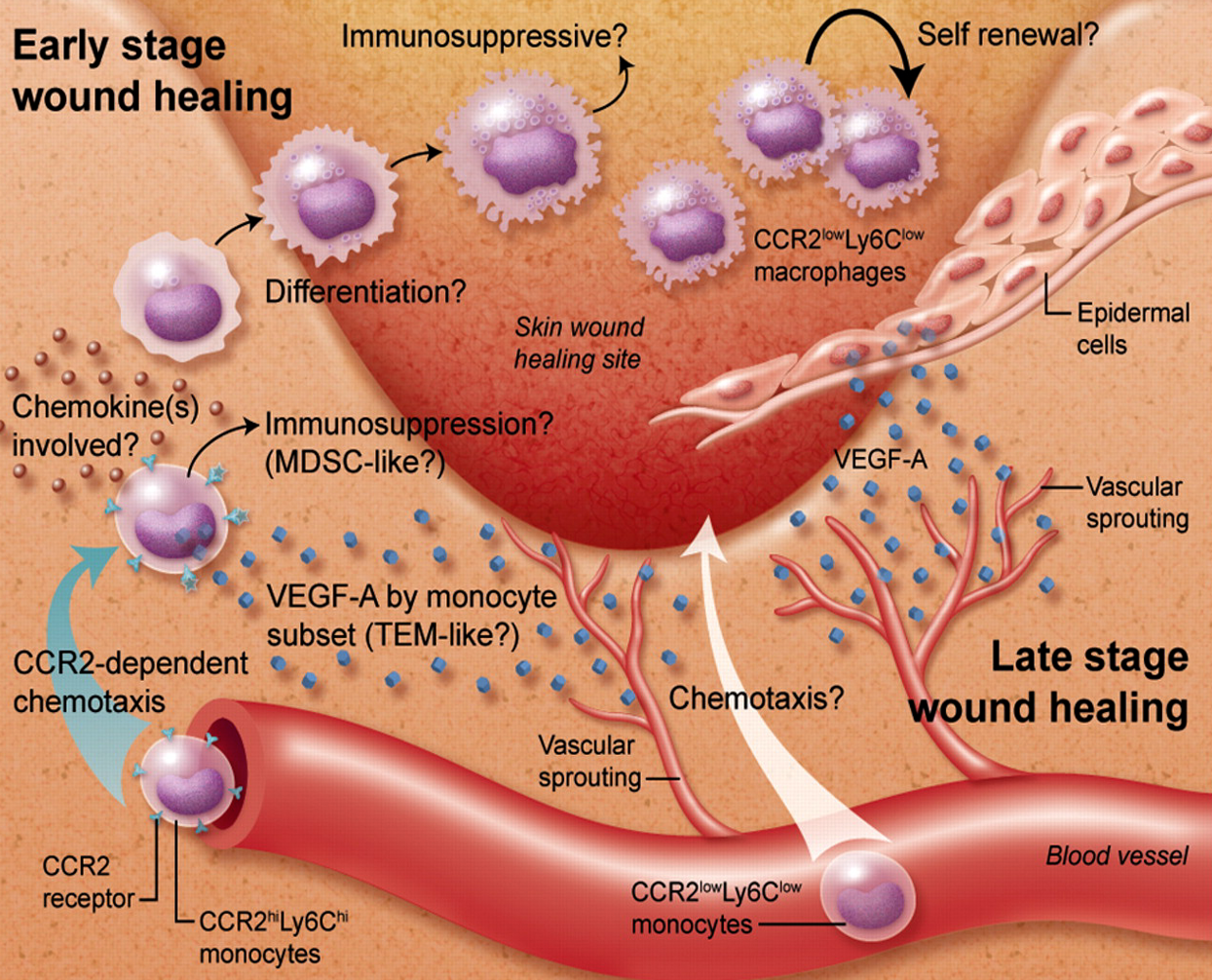
Wound healing
Moneer Almadani
Objectives
- Introduction
- Phases
- Types
- Wound closure
- Factors influencing wound healing
- Complications
Introduction
- Wound is a break in the skin
- Wound healing is the effort of injured tissue to restore normal function and structural integrity after injury
- A complex series of events, begins at the moment of injury and could continue for months to years
Healing, & tissue repair are central in surgery - Understanding the physiologic mechanism involved in process of wound healing -Create an environment where healing can proceed in an optimal fashion
Phases of healing
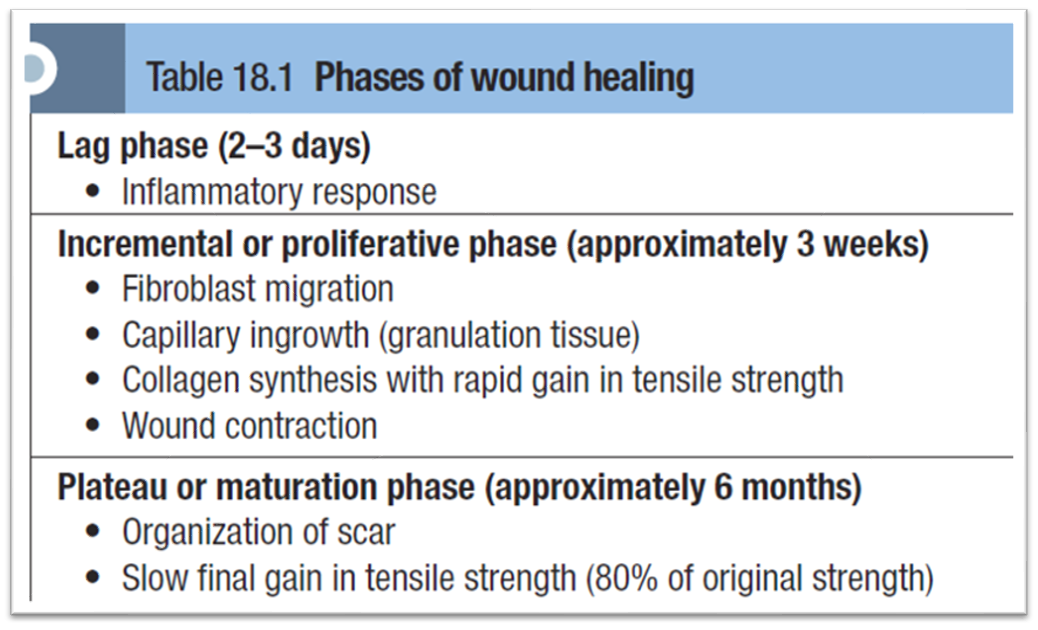
- Overlap in both time and activity
- All wounds undergo the same basic steps of repair
- Acute wounds proceed in an orderly and timely reparative function
- Chronic wounds stalled in the inflammatory phase, and doesn’t proceed to closure
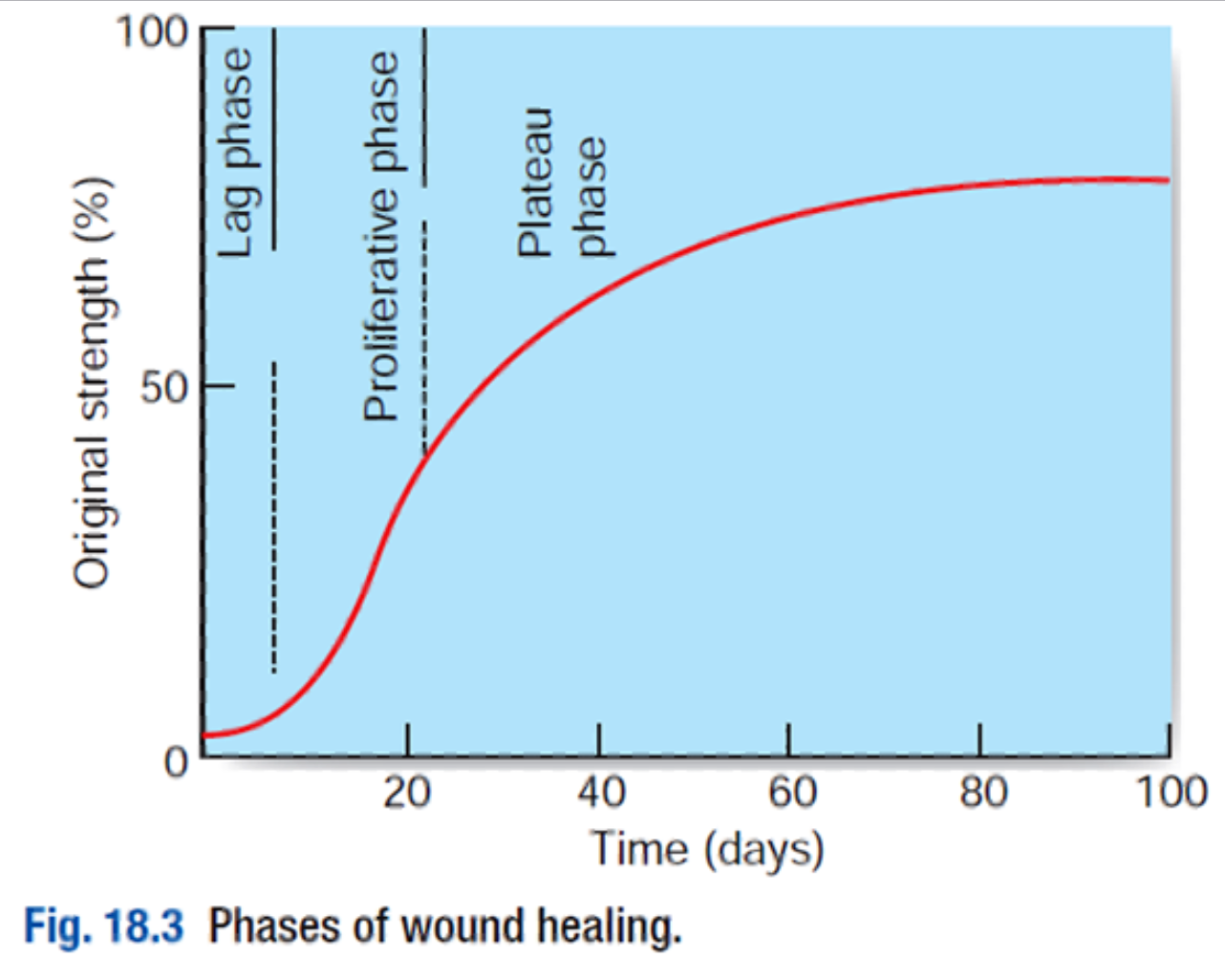 A) Lag phase:
A) Lag phase:
-
Characterized by an inflammatory response to injury, during which capillary permeability increases and a protein-rich exudate accumulates
-
Inflammatory cells migrate into the area, dead tissue is removed by macrophages, and capillaries at the wound edges begin to proliferate
-
Elapses before fibroblasts begin to manufacture collagen to support the wound
2D before showering, to ensure good sealing - water proof wound after LAG stage epithelial prof
B) Incremental phase (Regenerative)
- Systemic stimulus for fibroblast activity.
- Progressive collagen synthesis by fibroblasts
- Increased in collagen turnover
- Old collagen undergoes lysis and new collagen is laid down
- Increased in tensile strength
C) Plateau phase: (Maturation) - 6 months final revision surgery
- After 3 weeks, the gain in tensile strength levels off
- Excess collagen is removed during this final clearing-up process
- Fibroblasts and inflammatory cells declined
- Skin and fascia recover only 80% of their original tensile strength
Types of surgical wounds

A) Primary (First intention)
- Wounds are sealed immediately
- Clean type
- Simple suturing, & Skin graft /flap
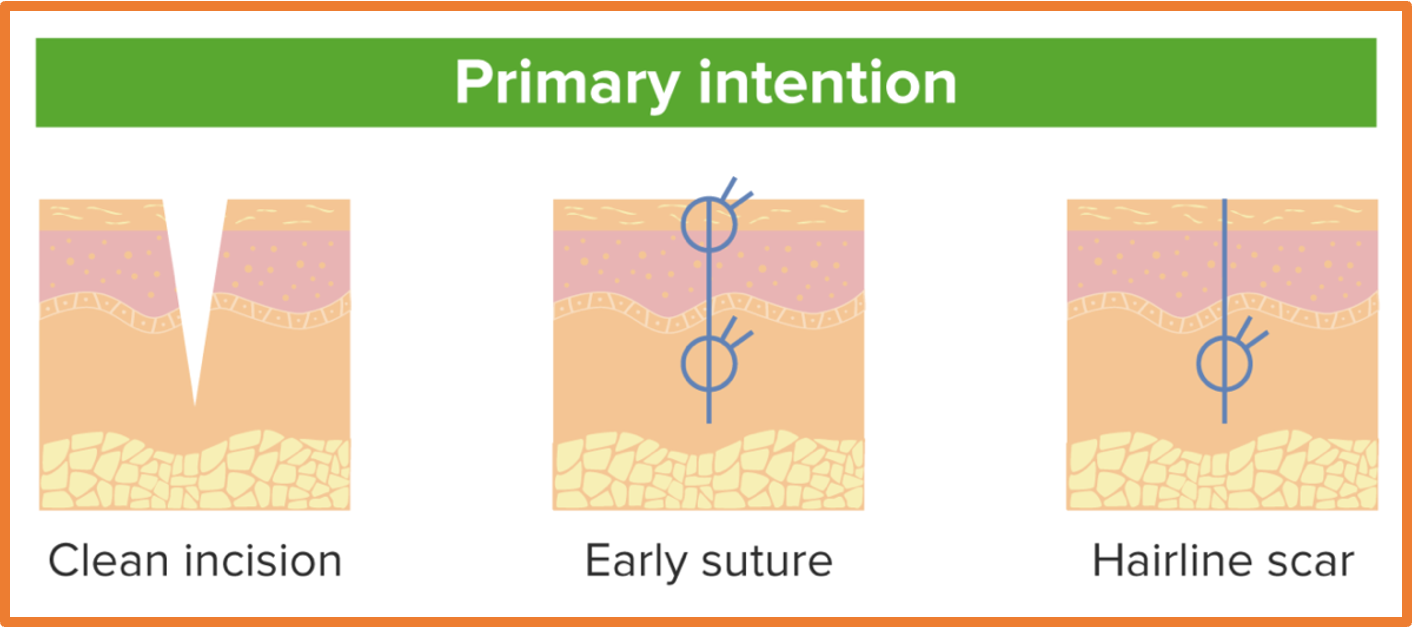
B) Secondary (Second intention) - leave it open, granulation healing, irrigation, daily dressing - 10D - 1M
- No closure
- Highly contaminated wounds
- Re-epithelialization > Wound contracture
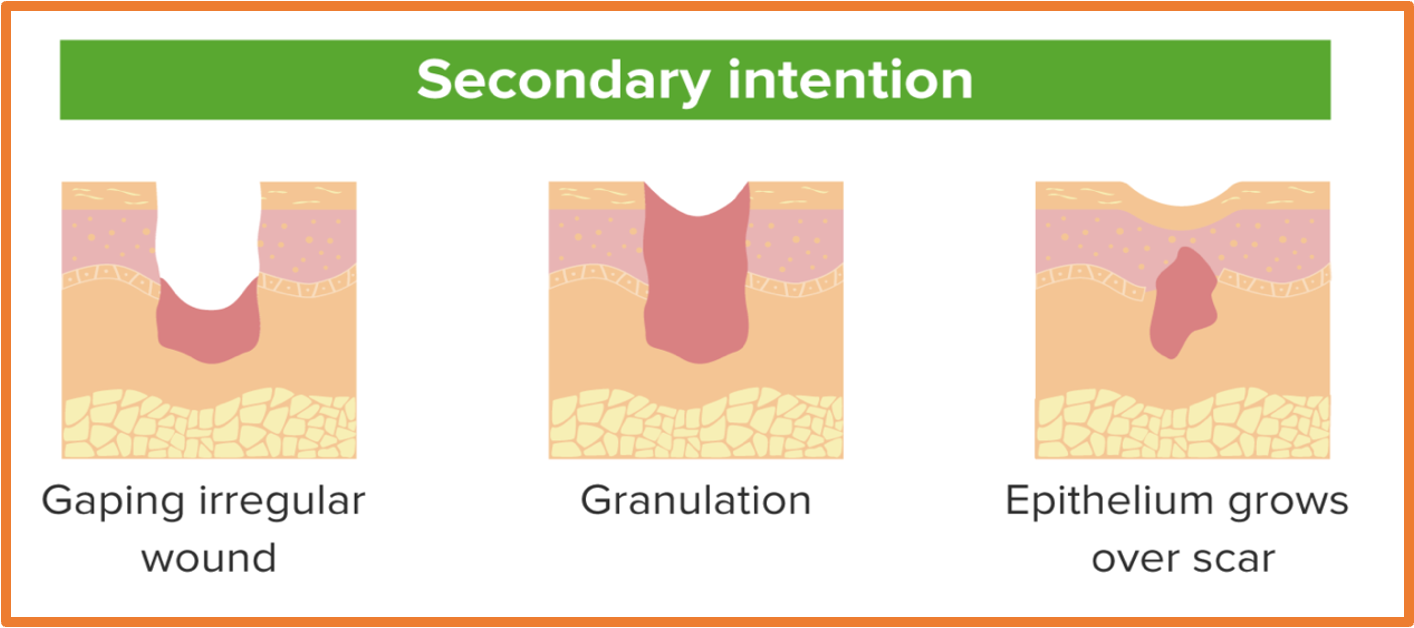
C- Tertiary (Third intention)
- Delayed primary closure
- Contaminated wounds treated first, once the wound is clean then closed
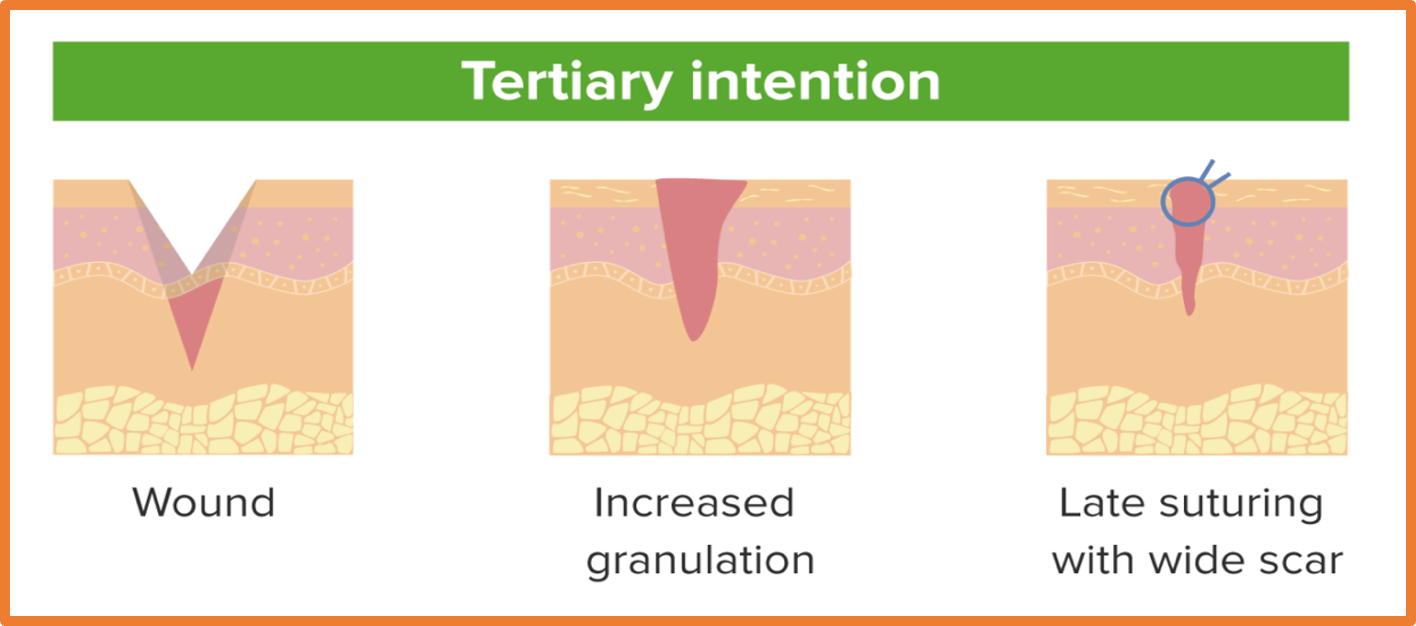
Factors affect wound healing
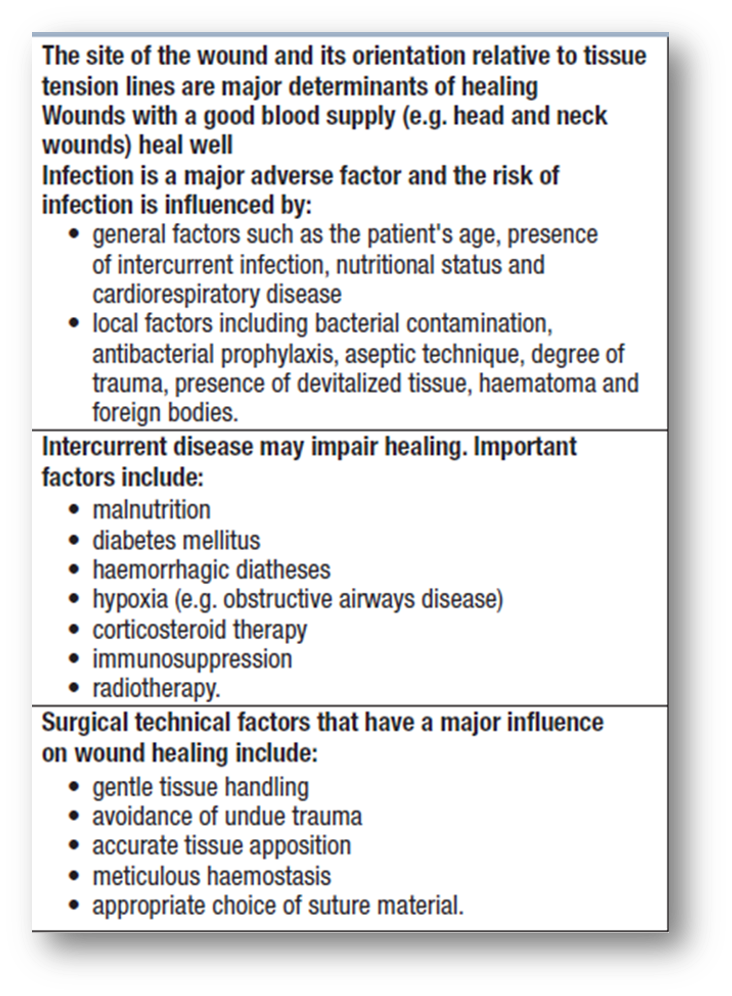
Complications of wound healing
- Wound infection
- Evisceration - __
- Bleeding
- Adhesions - __
- Herniation - (incisional hernia)
- Sinus/Fistulation (communication between two epithelial surfaces)
- Suture complications
- Malignant changes
- Excessive healing (Hypertrophic scar- Keloid)
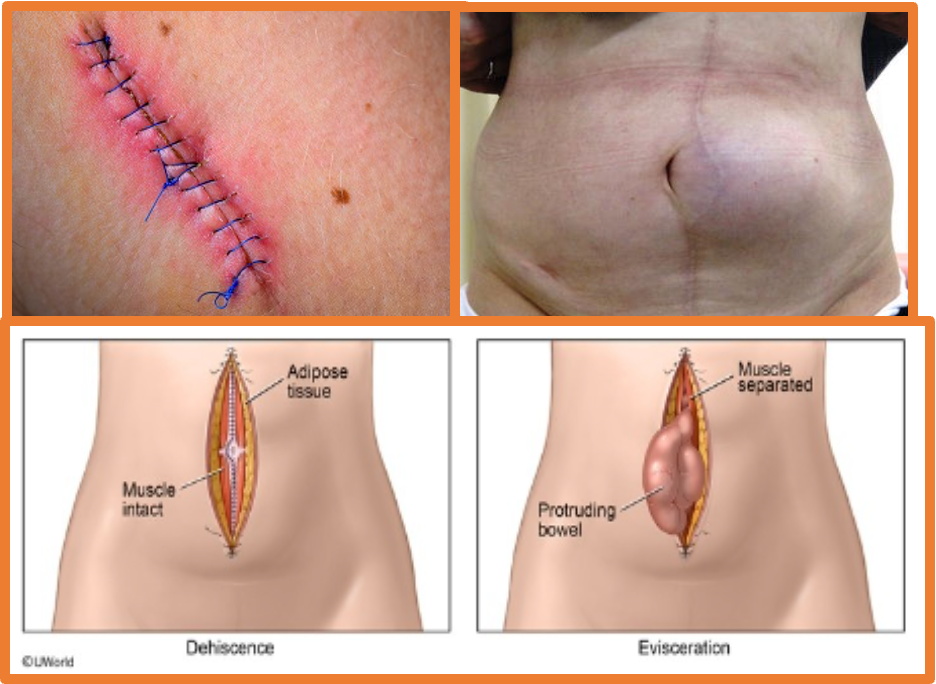
Excessive wound healing
Hypertrophic scar Vs. Keloid scar
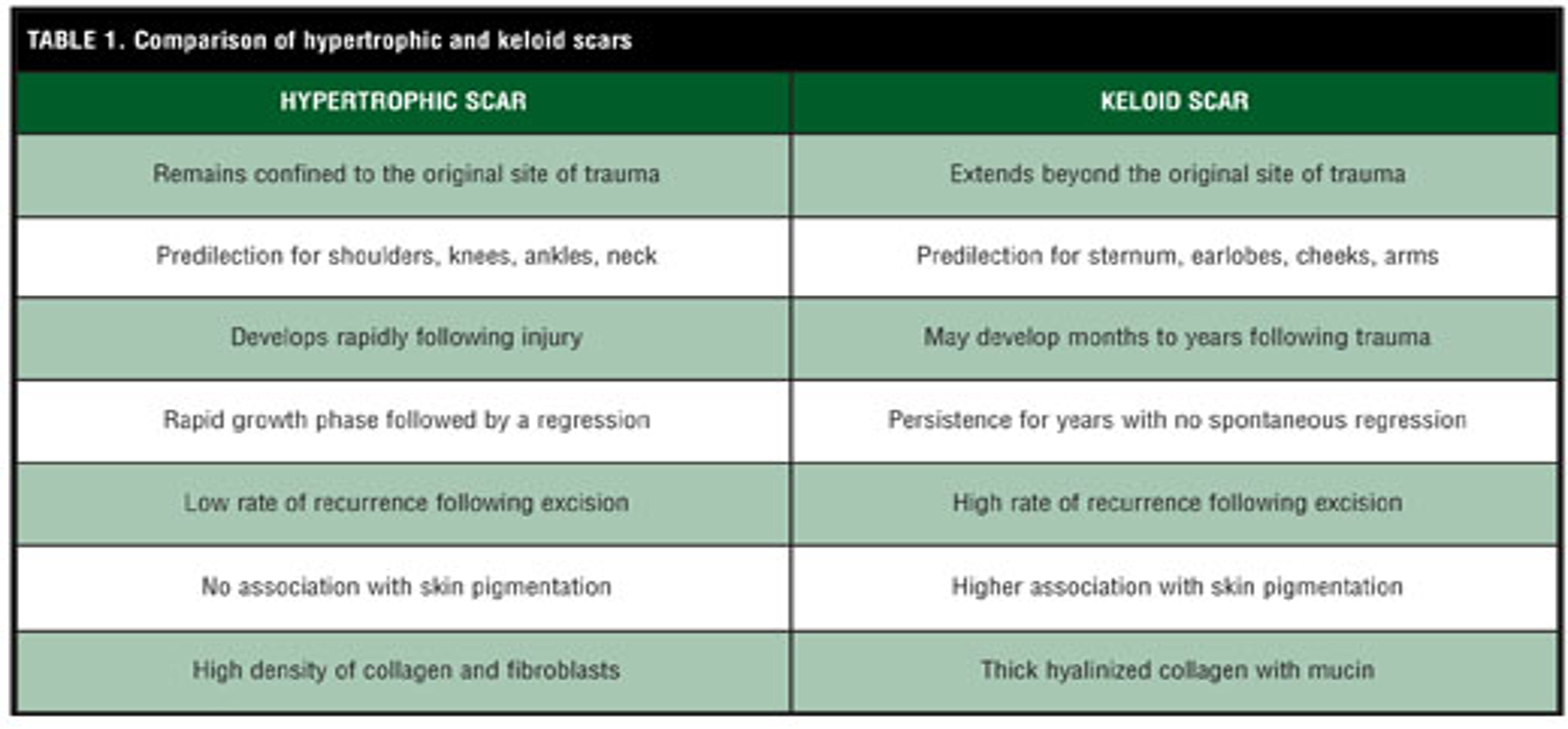
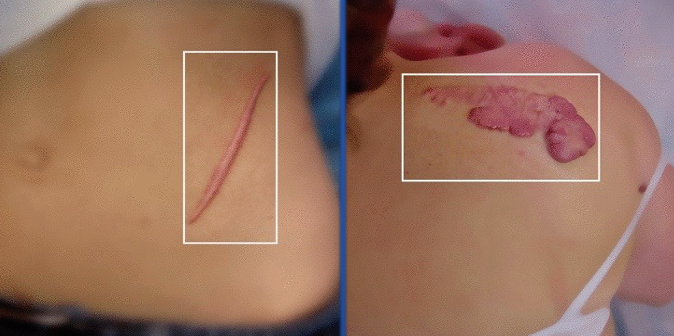
References
- Principles and Practice of Surgery Pg 281-286